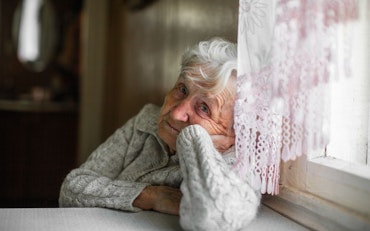The pros and cons of a consumer platform rating aged care quality
OPINION – Minister for Aged Care Sussan Ley has previously spoken about a Trip Advisor style platform for informing consumers on aged care quality and ABC News recently featured a segment on increasing demand for an online review and rating system for aged care services.

Steve Collier
The platform would allow potential consumers of aged care to draw on the shared experiences of others and ratings of a providers quality to make better informed decisions. Steve Collier, Managing Director of MOA Benchmarking discusses the pros and cons.
Consumers increasingly use the power of online communities like TripAdvisor and Facebook to be savvier buyers of personal goods and services.
On the surface, it seems a natural progression for people to have access to a similar platform to inform their choices in aged care. However, there are some key considerations that seem yet to be raised.
While it doesn’t seem reasonable to compare complex care needs in declining health through to end of life with a holiday experience, it is more likely that this is a simple way to draw attention to a more complex concept.
A similar Government lead concept is the national quality indicator programme. While the long term long term direction of this program remains unclear, the basic intention is to publish data contributed voluntarily by providers through three quality indicators.
These measures will gather data on physical restraints, unplanned weight loss and pressure injuries. The results of this data collection is for the benefit of consumers and is publicly available on the MyAgedCare website.
From a quality measurement perspective there’s certainly conjecture over the usefulness of the chosen areas as being useful indicators of quality.
Some commentary around the idea has also led to further debate surrounding what quality measurement method or tool is best.
Robust quality measurement frameworks necessitate that interconnected information is drawn from a variety of tools such as surveys, quality indicators and quality of life tools to best create a more reliable overall view of a services quality. Using quality indicators doesn’t exclude the use of quality of life or any other tools.
However for such a program to fulfill its objective, it should be clear on what information is important to consumers and what suite of quality measurement tools working in unison would best meet their needs.
Consideration also needs to be given to how the information will be presented to consumers and how they will make reliable comparisons between ratings. A key concern with the national programme is the data that isn’t being captured.
When collecting data through self-reporting quality and risk management programs like MOA Benchmarking, providers also provide data on their intensity of care, type and size of their service and the unique characteristics of care recipient cohorts.
That allows their results to be risk-adjusted and contextualised. Only then can those results be fairly benchmarked with other services with similar characteristics.
The transition to a more consumer driven aged care market has increased competition for business. Providers contributing data to any program that plans to make their potentially sensitive information public should have the utmost confidence that it will be presented clearly, in context and allow for consumers to make fair comparisons through their evaluations.
Publishing such information within a competitive setting can also create perverse incentives for providers to make their own adjustments if they feel their data might be presented more fairly or where they might receive more favourable outcomes.
Then, considering the objective is the same, will the introduction of a new platform operating independently to the national program, make life any easier for consumers and providers?
If the new program fails to overcome the challenges faced by the national programme, consumers may simply have two sources of potentially unreliable information. If it does, perhaps the disparity between the two sources will further cloud the minds of consumers.
For providers, will double or triple handling data only serve to divert their attention and resources from continuous quality improvement.
TripAdvisor has undoubtedly given consumers a stronger voice in terms of what they expect as consumers of accommodation, dining and hospitality services. However, it has also been reported that a louder message isn’t always a fair one.
Accommodation providers are finding it increasingly difficult to moderate or respond to irrational, false and self-serving negative reviews and ratings. They have little recourse in positively addressing such information that when shared in a public forum, significantly impacts against their hard earned reputations.
Those making choices on aged care are far more emotionally invested than when reviewing a hotel room or restaurant meal. Strong consideration would need to be given to how the aged care adaption of such a platform would screen and moderate the content of contributors and the rights and avenues of recourse for providers.
While the intention is good, there’s several higher level conversations surrounding quality in aged care that perhaps need to be resolved to action before such a platform could be viable or beneficial.
Steve Collier is Managing Director of MOA Benchmarking which offers a quality improvement program for aged care facilities, home care services, and retirement villages. With over 15 years’ experience in client service and organisational management, he has built a strong profile in the Australian age care sector.










